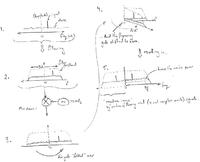mtwieg
Advanced Member level 6
Hello, hopefully this will be an easy one for you guys...
I'm testing a zero IF/homodyne receiver I've built, and am a bit confused that I am getting about 3dB more noise than expected. I'm converting from 10MHz, and am interested in selecting a bandwidth of 100KHz (so f=9.95-10.05MHz), so I made a baseband lowpass filter with a cutoff frequency of 100KHz, thinking that would select the proper bandwidth. But I'm pretty sure that's wrong, since in reality all the signal content between 9.9-10.1MHz will end up in my passband, hence why I'm seeing +3dB noise over what I expect from 100KHz of bandwidth. So should I reduce the cutoff frequency of my baseband filter to 50KHz? On paper this will allow my desired 100KHz of bandwidth through, and give the noise I expect, but I'm having trouble just believing that a lowpass filter with fc=50KHz can pass signals with BW=100KHz...
Any advice?
I'm testing a zero IF/homodyne receiver I've built, and am a bit confused that I am getting about 3dB more noise than expected. I'm converting from 10MHz, and am interested in selecting a bandwidth of 100KHz (so f=9.95-10.05MHz), so I made a baseband lowpass filter with a cutoff frequency of 100KHz, thinking that would select the proper bandwidth. But I'm pretty sure that's wrong, since in reality all the signal content between 9.9-10.1MHz will end up in my passband, hence why I'm seeing +3dB noise over what I expect from 100KHz of bandwidth. So should I reduce the cutoff frequency of my baseband filter to 50KHz? On paper this will allow my desired 100KHz of bandwidth through, and give the noise I expect, but I'm having trouble just believing that a lowpass filter with fc=50KHz can pass signals with BW=100KHz...
Any advice?
